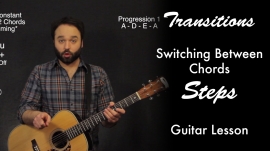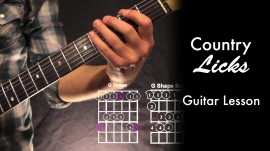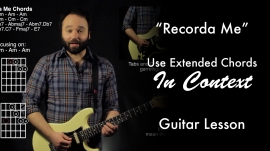Alright… Tritone Substitution Soloing sounds like it could be fun but where to begin?! I go through a few common ways to think about ii V I’s, Arpeggios and Scales. I also go through them in common positions, 5th string roots, 6th string roots and another position which connects the two.
My example is in C so the chords are: Dm7 – G7 – Cmaj7. We’re going to play the Db7 (tritone substitution) arpeggio or the Db Lydian Dominant scale while the G7 is playing.
When we use this as a soloing concept and not just a chord concept, what happens to chord?
When we use the arpeggio we get the b5 – b7 – b9 – 3 of our original V chord.
When we the scale we get the b5 – b6 – b7 – 1 – b9 – b3 – 3 of V chord.
Dig!
-Related Lessons-
:18 – “Grace” | Groovin’ Major 251 – ii V I (251)
:41 – Tritone Substitutions?! | Theory
1:27 – Minor 7 Arpeggios
1:27 – Dominant 7 Inversions (Whole Neck!)
1:27 – Major 7 Arpeggios
2:34 – Building Chords?! | UGT 2/8
2:42 – Extended (7 9 11 13) Chords?! | UGT 3/8
4:08 – Transposing (Chords as Numbers)?! | UGT 5/8
4:44 – What Are Modes?! | Theory
4:49 – Dorian Scale (Whole Neck)
4:57 – Lydian Dominant Scale (Whole Neck!)
5:30 – Major Scale Shapes | CO 7/10
5:35 – Lydian Scale (Whole Neck!)
PDF’s
Tritone Substitution Soloing PDF, 7th Arpeggio Shapes, Dominant 7 Inversions, Theory, Dorian Scale Shapes, Lydian Scale Shapes, Lydian Dominant Scale Shapes, CAGED Scale Shapes




